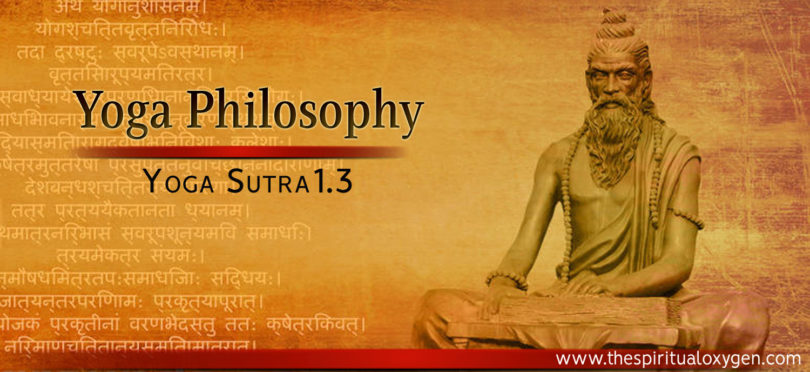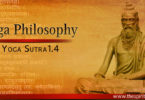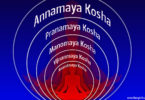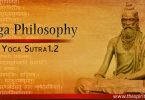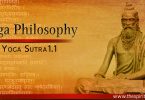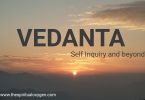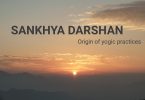In the last sutra we have discussed the state of yoga or samadhi. Now the next yoga sutra 1.3 answer the such questions as what happens to the consciousness when all fluctuations of mind-field get dissolved? What is the purpose of yoga? Why to stop the modification the mind-field? What happens in the state of Samadhi?
Understanding of Yoga sutra 1.3 will be giving the answer to all these questions. But before going into the explanation of this sutra, I request you to read previous sutras for better understanding. because the understanding of yoga can never be completed without these two sutras.
Yoga sutra 1.1 – beginning of discipline known as yoga
Yoga sutra 1.2 – what is the true meaning of yoga
Third sutra – Purpose of yoga (phal sutra)
The 3rd sutra of Patanjali yoga sutra deals with the purpose of yoga there known as phal sutra. Understanding of yoga can never complete without this sutra. First word of sutra which is ‘tada’ means ‘then only’ indicates towards the state of Kaivalya which is the purpose of yoga or in other way then the state of Kaivalya is achieved.
तदा द्रष्टुः स्वरूपेऽवस्थानम् ॥1.3॥
tadā drastuh svarūpe-vasthānam ॥1.3॥
Tada – then/then only
Drashtuh – Seer, witnessing consciousness, purusha
Svarupe – in own nature
avasthanam – settling, being in a state, reside
then only seer (purusha/true-self) resides in own nature
or
then only realization of self happens
Translation and comment
Now lets take each word for discussion to deepen our understanding of this sutra.
Tada – then/then only
The first word of this sutra tada means then or then only which emphases on achieving the state of chitavrittinirodha (dissolution of mental fluctuation into its origin), so then only the state of kaivalya (self-realization) can be attained. In other way we can say that this sutra indicates towards the fulfillment of prior condition which is to achieve the state of stillness of mental activity. Hence this sutra is to be known as phala sutra.
Drashtuh – Seer, witnessing consciousness, purusha
The next word in the sutra is drashta that is a very practical and functional term indicating towards the Purusha (pure consciousness) which is the power seeing (seer). Remember only consciousness has ability of seeing. The very nature of purusha is witness and this witnessing is the purest.
Svarupe – in own nature, essential nature
Any substance has two types of properties rup mean non essential properties and Svarup means essential properties for example sugar, its shape, colour and state are changeable therefore these are non essential properties and sweetness which remains in all the conditions is essential property. In this sutra the word svarupe indicates essential state of purusha that state which never changes in any condition. Also this word svarupe is referring to the original state or nature of something.
Avasthanam – settling, being in a state, reside
The word avasthanam means being in one state or residing in one position. Basically this word indicates towards establishment which unshakable. To have the complete understanding let see both words together, Svarupe-avasthanam – being in true nature, residing in own essence or self (seer) will realize own nature. As soon as fluctuation of the mind stops; when it is calm, then nothing remains there infect no mind remains so self (which is seer) can see own true nature and therefore attains the state of Kaiwalya.
Discussion
In the ordinary life, our true self is recognized with mental modifications (chita-vritti). These mental modifications create the cognitions which reflected by light of budhhi and results in alternative to reality of self. We need to understand that as soon as a thought occurs in the mind field (chita-vritti), it gives validation to the existence of thinker. This new identity (of thinker), which is caused by presence of thought remains only till thought exist; as cessation of thought happens simultaneously existence of thinker get ceased which means this identity is depended and not permanent, therefore drashta (seer) recognizes its true nature.
This has to be clearly understood that problem is not we have thought(s) but due to that new identity of thinker rises, which creates the confusion between thinker and observer. In the sutra 2.20 Patanjali says drashata drishi maatrah translated as self is only the observer means self is not the doing but the watcher. The observer (the self) is only one who exists in the presence or absence of thought. Thus the only way to realize the pure existence of self is “cessation of all the modification”.
As soon as all the modification of the mind dissolve (or guna rest in their origin); mind-field achieves the state of nirodha, the mind mind-field remains with no more object. Chita (mind) remains in the un-manifested state (aviyakt-avashtha). Then only consciousness remains without any modification in it (the self/purusha/consciousness remains). Therefore seer (the power of seeing) realizes its (hers) own true nature the self happens and becomes a Sakchhi (witness consciousness). The existence of the self is independent and this state of independence known as kaivalya.
Conclusion
In the last sutra Patanjali says yoga is the stillness of the mind, now when the state of stillness has been achieved then what happens? This sutra continues it and explains the outcome of still mind which is the state of isolation/freedom (kaivalya).Once this realization has achieved, it never goes away it remains thus no more confusion arises further about self, even when mind is interacting with the ordinary world.
Further question rises that who we are at the mind of fluctuations? what is the identity of self during the ordinary state of mind? The next sutra of Patanjali Yoga Sutra (yoga sutra 1.4) gonna answer it.

